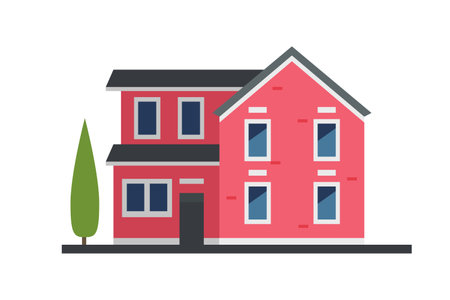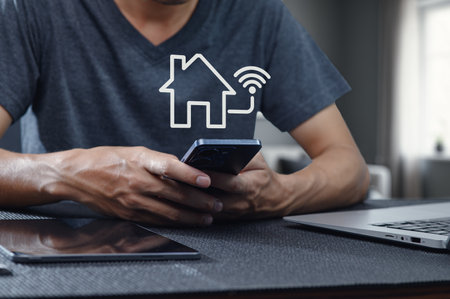Introduction to Voice-Controlled Smart Homes
Smart home technology has quickly transformed from a futuristic dream into an everyday reality in American households. Over the past decade, interconnected devices and intelligent automation have redefined how we interact with our living spaces. Among these innovations, voice control stands out as a game-changer, offering effortless, hands-free management of lights, appliances, entertainment systems, and more. Powered by virtual assistants like Amazon Alexa, Google Assistant, and Apple’s Siri, voice-controlled smart homes are increasingly becoming the norm rather than the exception. This shift reflects not just a desire for convenience or high-tech appeal but also an inclusive approach to accessibility—making daily life easier and more independent for people with disabilities. As Americans continue to embrace smart speakers and voice-activated devices, the focus on accessible design and intuitive user experiences grows stronger, setting the stage for greater innovation in both technology and inclusivity.
Understanding Accessibility Needs
For millions of Americans living with disabilities, navigating daily life at home can be filled with obstacles that many take for granted. From reaching light switches to controlling entertainment systems, the design of traditional homes often fails to accommodate diverse mobility, visual, or cognitive needs. Voice-controlled smart home technology is emerging as a transformative solution, breaking down barriers and creating new opportunities for independence.
The Everyday Challenges Faced at Home
People with disabilities encounter unique challenges in their home environments. These barriers vary depending on the type of disability—mobility impairments, vision loss, hearing differences, or cognitive limitations each bring distinct needs. The table below highlights some common difficulties and how voice-enabled smart home devices can help:
| Challenge | Traditional Barrier | Voice-Controlled Solution |
|---|---|---|
| Mobility Impairments | Difficulty reaching physical controls (switches, thermostats) | Hands-free voice commands for lighting, climate, and appliances |
| Visual Impairments | Inability to see buttons or read displays | Audio feedback and spoken instructions for system navigation |
| Cognitive Differences | Complex device interfaces or remembering multiple steps | Simplified routines triggered by custom voice prompts |
| Hearing Differences | Lack of visual alerts or captions for alarms and notifications | Integration of visual cues (smart lights) in response to voice commands |
A Seamless Path Toward Independence
The real innovation lies in how these voice-first solutions remove layers of complexity. Instead of relying on fine motor skills or sharp eyesight, users can simply ask their virtual assistant to perform tasks like adjusting the thermostat, locking doors, or setting reminders. This empowers people with disabilities to customize their environment with greater autonomy and dignity.
Cultural Relevance in American Homes
Adapting these technologies isn’t just about convenience—it’s about fostering inclusion and equity within the fabric of American life. As smart speakers and assistants like Amazon Alexa and Google Home become household staples across the United States, their potential to close accessibility gaps grows exponentially. For families and individuals alike, voice-controlled smart homes represent a new standard of comfort that respects every user’s unique needs.

3. Core Innovations in Voice Technology
Voice-controlled smart homes are rapidly evolving, especially for people with disabilities who benefit from hands-free, intuitive interfaces. Recent breakthroughs in voice assistants—like Amazon Alexa, Google Assistant, and Apple’s Siri—have transformed daily living by offering responsive, natural language processing that understands nuanced speech and regional accents. These platforms now integrate with a growing ecosystem of devices: smart lights, thermostats, security cameras, and even kitchen appliances, all controlled by simple spoken commands. What truly sets today’s innovations apart is seamless system integration. Users can set routines, such as “Good Night,” that simultaneously lock doors, dim lights, and adjust the thermostat without touching a single switch. The latest voice technology also includes context awareness; assistants learn user preferences and adapt over time, creating a personalized experience. This accessibility-driven innovation empowers individuals with limited mobility or dexterity to live more independently and confidently in their own homes.
4. Real-Life Impact and User Stories
Empowering Lives: Firsthand Experiences from Across the U.S.
Voice-controlled smart homes are more than just cutting-edge technology—they’re real game changers for Americans with disabilities. These stories highlight how innovative home automation brings independence, confidence, and dignity to daily life, from San Francisco apartments to rural Midwest houses.
Case Study Highlights
| Name | Location | Disability | Smart Home Solution | Impact on Daily Life |
|---|---|---|---|---|
| Maria L. | Austin, TX | Cerebral Palsy | Voice-activated lighting & door locks | No longer relies on caregivers to move freely at home; enjoys increased privacy and self-reliance |
| Derek S. | Seattle, WA | Spinal Cord Injury (Quadriplegia) | Integrated voice-controlled thermostat & security system | Can adjust comfort settings independently; feels secure living alone for the first time in years |
| Tanya R. | Pittsburgh, PA | Blindness | Smart speakers for reminders & appliance control | Easier meal prep and medication management; reduced anxiety about missing important tasks or safety issues |
| Bryan C. | Tulsa, OK | Multiple Sclerosis (MS) | Automated window shades & entertainment systems via voice command | Makes staying comfortable during flare-ups possible without assistance; increases overall well-being at home |
User Reflections: Voices of Transformation
“Being able to turn off my lights or lock my doors just by asking? That’s freedom I never thought I’d have.” — Maria L., Austin
“I don’t have to wait for someone to help me feel safe or warm in my house. My voice is all I need now.” — Derek S., Seattle
“With Alexa reading out reminders and controlling my oven, I feel in control of my space like never before.” — Tanya R., Pittsburgh
“On tough MS days, it’s a relief to know I can manage my environment with simple voice commands.” — Bryan C., Tulsa
The Ripple Effect: Families and Caregivers Benefit Too
The advantages ripple outwards—families experience less stress knowing their loved ones are empowered and safer. Caregivers can focus on quality companionship rather than routine tasks. Voice-controlled smart homes are not just about convenience; they’re about reimagining accessible living and fostering true inclusion for people with disabilities across America.
5. Designing for Inclusion
Best Practices for Accessible Smart Homes
When designing voice-controlled smart homes for people with disabilities, accessibility isn’t just a feature—it’s the foundation. The best practices begin with understanding diverse user needs and proactively addressing potential barriers. For example, developers should ensure that voice assistants can accurately recognize a wide range of speech patterns, including those affected by various disabilities. Integrating simple language commands, customizable trigger words, and multi-language support helps widen usability. It’s also essential to minimize latency in response times and enable offline capabilities for users who may have unreliable internet connections.
User-Centered Design Strategies
A truly inclusive smart home is shaped by the people who use it. User-centered design places individuals with disabilities at the heart of the innovation process. This means involving users in every phase—interviewing them about daily routines, observing real-world challenges, co-creating solutions, and iteratively testing prototypes in authentic home settings. Design teams benefit from collaborating closely with occupational therapists, accessibility advocates, and user panels to uncover pain points that might be invisible to able-bodied designers. Such collaborative feedback loops lead to intuitive interfaces and thoughtful automations tailored to unique lifestyles.
Ensuring Technology is Genuinely Accessible
Accessibility is more than compliance; it’s a commitment to dignity and independence. Technologies must be compatible with assistive devices like screen readers or hearing aids, and offer alternative input methods for users unable to speak clearly or at all—such as gesture controls or adaptive switches. Clear onboarding guides, robust customer support, and privacy safeguards are vital for building trust among users with disabilities. Ultimately, inclusive design not only empowers individuals but also enriches the entire smart home ecosystem—demonstrating that innovation shines brightest when everyone can participate fully.
6. Challenges and Future Possibilities
Despite the remarkable progress of voice-controlled smart homes for people with disabilities, several challenges remain.
Ongoing Obstacles
One persistent issue is the reliability of voice recognition technology, especially for users with speech impairments or strong accents. Current systems can sometimes misinterpret commands, leading to frustration and inconsistent accessibility. Additionally, the cost of smart home devices remains a barrier for many, as not all families or individuals have the resources to invest in these technologies. Finally, integrating diverse devices from different manufacturers into a seamless ecosystem is still a technical challenge.
Privacy Concerns
Another significant concern centers around privacy. Voice-controlled devices are always listening for their wake word, raising questions about data security and how much personal information is being collected, stored, or potentially shared. For people with disabilities who rely heavily on these devices, the risk of sensitive data exposure is especially critical. Ensuring transparency from tech companies and robust privacy protections will be essential as adoption grows.
The Future Potential
Looking ahead, the potential for voice-controlled smart homes is vast. Innovations in artificial intelligence promise more accurate speech recognition and better contextual understanding, making these systems even more user-friendly for people with various disabilities. As costs decrease and device ecosystems become more unified, smart home accessibility will be within reach for a broader population. Furthermore, future advancements may include personalized voice assistants tailored to individual needs or predictive automation that anticipates user actions—dramatically enhancing independence and quality of life.
Conclusion: Designing a More Inclusive Tomorrow
The path forward involves continued collaboration between technologists, disability advocates, and designers to address existing challenges while pushing innovation further. By prioritizing both accessibility and privacy, we can ensure that voice-controlled smart homes evolve into powerful tools for inclusion—empowering everyone to live with greater comfort, autonomy, and dignity.

